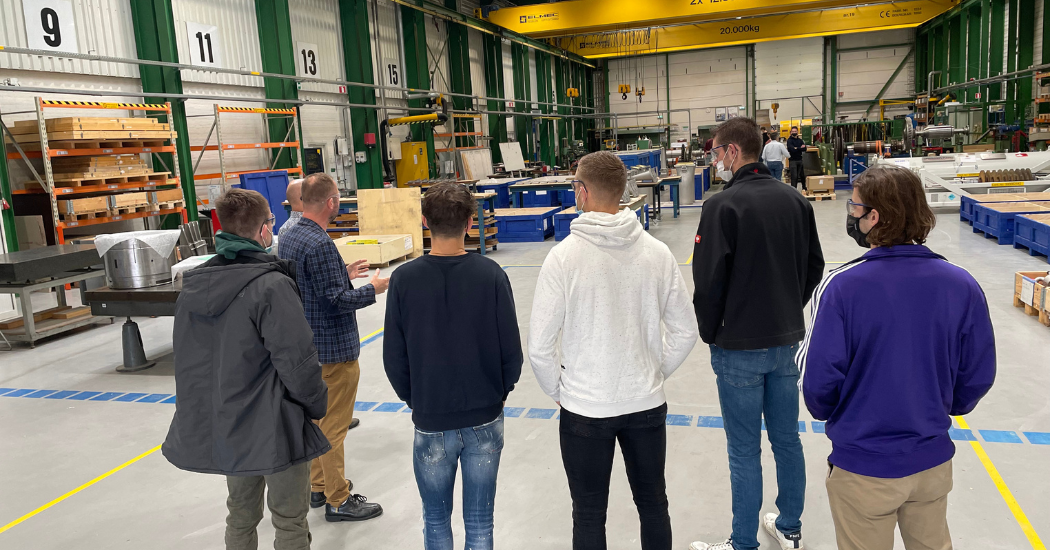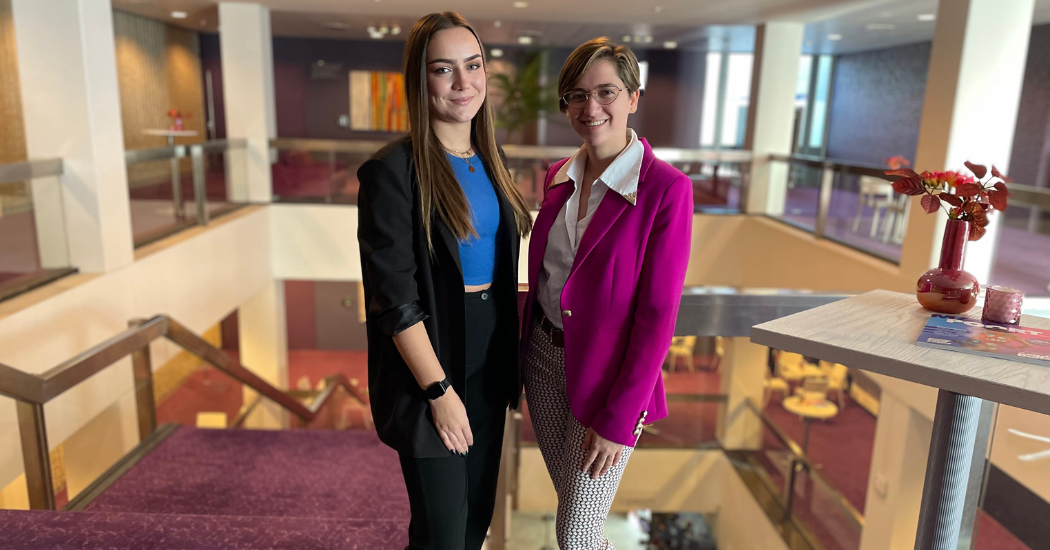Sulzer sets up collaboration with Fontys University to provide students with real-world engineering knowledge.
Improving processes and unlocking future innovations relies on new ideas. Many of the engineers of tomorrow who will deliver these breakthroughs are currently learning their craft at university. However, students at Fontys University of Applied Sciences are already making a difference in the world of engineering thanks to an initiative set up by Sulzer’s Venlo Service Center. Designed to teach the Taguchi method, students have collaborated with engineers at the service center to help improve the quality control process for gas turbine coating samples, gaining valuable real-world experience.
Start from scratch
The Sulzer Venlo Service Center in the Netherlands is a leading provider of repairs and upgrades for rotating equipment, with a specialism in turbomachinery. As part of this service offering, the facility carries out turnkey projects for gas turbines used in the power generation sector. These often involve applying metallic and ceramic coatings (M-CrAlY’s and TBC) to turbine parts to ensure they can resist corrosion/oxidation and withstand the high temperatures of combustion.
To assure customers of the quality of these coatings, Sulzer provides detailed reports on samples, including photographs. However, during preparation, it was clear that the sanding and polishing process was introducing scratches into the samples – a phenomenon that Sulzer wanted to eliminate. While these scratches were a superficial byproduct of the preparation process, it was important for Sulzer to ensure that the samples provided to customers in the reports were of the best possible quality.

A tour of the workshop was given so the students had a good understanding of Sulzer’s operations
Seizing an educational opportunity
Paul Thommassen, Process Engineer at Sulzer, has worked at the company for 22 years, and saw an educational opportunity in the planned project: “We’re part of Innovation Circle Venlo, which gathers local companies to discuss trends and developments in our respective industries. As part of this, I delivered a presentation on the Taguchi method, a statistical technique to improve designs and processes that I’d been applying at the service center. An attending lecturer from Fontys University approached me and said that this would be a good subject for engineering students. With the coating samples project we were undertaking, I thought it would be a great opportunity to collaborate with the university.”
The Taguchi method relies on statistical analysis of design or process parameters during research and development (R&D). Its main objective is to expedite the testing phase through a smarter workflow and reduce the negative social impact of a product. Furthermore, when properly applied, it can reduce R&D times, improve quality and lower costs.
Paul connected the relevant teams at the Venlo Service Center and Fontys University to set up the coating samples project. After agreeing the scope and course outline, the project began in earnest.
The process of a Taguchi method project
To begin with, professors at the university delivered lectures on the Taguchi method. As an initial introduction, students took part in a paper helicopter case study. The aim was to modify the design parameters of the helicopter to maximize the amount of airtime it could achieve. The students were then invited to the service center.
Paul continues: “We spent two days with the students at Sulzer. First, we gave them a workshop tour so they had a good understanding of our operations, especially concerning gas turbines. Then we showed them the laboratory with the polishing and grinding machines, so they could see the process in action and build a knowledge base.
“Next, we moved to the classroom to learn the steps of Taguchi. With everyone up to speed, we split the students into five teams of five, with each team providing a proposed test schedule for the coating sample preparation. Once we received each schedule, our laboratory carried out the tests following the student’s instructions, with results sent back to the university for data analysis. Finally, we all met again for teams to present their results.”

Nicky Janssen and Jill Vloet, both studying Industrial Product Design, learned invaluable skills from the practical learning
Solving a real-world engineering challenge
The fact that a test schedule developed by the students is now being incorporated into quality documentation at the service center proves that the project was a success. The optimal approach heavily depended on parameter selection.
The more successful proposals focused on shortening the process while reducing scratches. To achieve this, students reduced the original eight grinding stages down to six, eliminating the very coarse sandpaper used at the beginning to instead rely on the finer grades used later. This helped to avoid scratches, which were being caused during the first stages of grinding.
Furthermore, the students suggested increasing the revolutions per minute (RPM) of the grinding machine to ensure that any particles that came loose from the paper were quickly swept away before they could cause scratches. As well as improving the quality of the samples, the new process also reduced lead times and costs, offering a tangible benefit to Sulzer customers.
Young engineering students making the grade
The project didn’t just benefit the service center. It provided up and coming engineers with the chance to prove their skills in the real world.
Nicky Janssen, who is studying Industrial Product Design, said: “Putting my knowledge into practice is something that gives me great satisfaction. I found it very interesting to see the different departments at Sulzer and ask questions.
“Being able to apply the knowledge of different disciplines is necessary to arrive at the best products. During this project, I discovered that not only the right mix of engineers, but also different techniques can make a distinction in the quality of what is delivered.”
Also studying Industrial Product Design with Mechanical Engineering as an option, Jill Vloet was another project participant: “If I may speak for myself, I learn the most from these internships and other practical assignments. This also applies to the project we carried out with Sulzer – I think it is a good way to prepare students for entering the working world, helping to provide them with the tools to work independently and also take initiative in groups.
“I think that every person can contribute a lot to a team, everyone has different perspectives, qualities and learning goals. I believe that bringing different viewpoints together can lead to true innovation.”

Students collaborated with engineers at the Venlo service center to help improve the quality control process for gas turbine coating samples, gaining valuable real-world experience
Nurturing the engineering community
Paul again: “At Sulzer, we are always looking for new talent and for the chance to engage with young people. We’ve set up this program to help equip them with the knowledge they need to overcome engineering challenges while providing students with valuable real-world experience. We want to actively support the next generation of engineering talent and that means providing young engineers with opportunities.
“Sulzer also welcomes apprentices to the company across all departments. We have students who have graduated from Fontys University training and working with us now – so we offer a clear progression path. Anyone wanting to know more can contact us or visit during one of our open days.”
With the success of the Taguchi method project, Sulzer’s Venlo Service Center and Fontys University are working to set up projects annually, providing engineering students in the Netherlands with even more support going forward.
“I’ve always been curious, and I have a strong desire to understand how things work. In my 22 years at Sulzer, I’ve always had the opportunity to be a part of projects that I can put my engineering heart into. This includes working with students, as we are given the freedom, from our General Manager and Management Team, to develop ideas and engage with the local engineering community. This support and trust from Sulzer is one the reasons I enjoy working here so much,” Paul concludes.
If you would like to learn more about educational and career opportunities at Sulzer, please don’t hesitate to contact us or visit our careers page.
About Sulzer:
Sulzer is a global leader in fluid engineering. We specialize in pumping, agitation, mixing, separation and application technologies for fluids of all types. Our customers benefit from our commitment to innovation, performance and quality and from our responsive network of 180 world-class production facilities and service centers across the globe. Sulzer has been headquartered in Winterthur, Switzerland, since 1834. In 2021, our 13’800 employees delivered revenues of CHF 3.2 billion. Our shares are traded on the SIX Swiss Exchange (SIX: SUN).





Comments